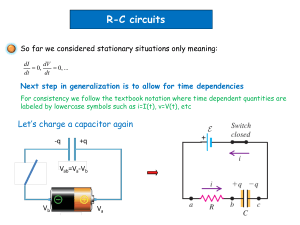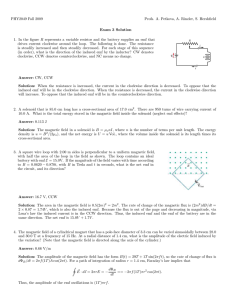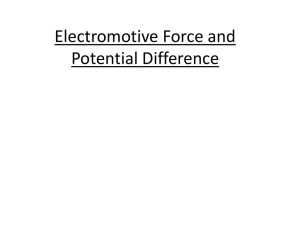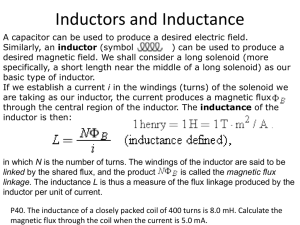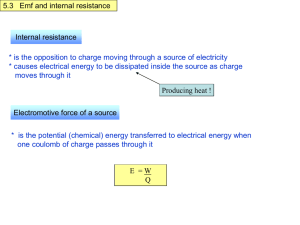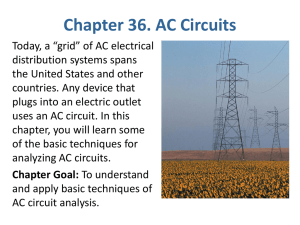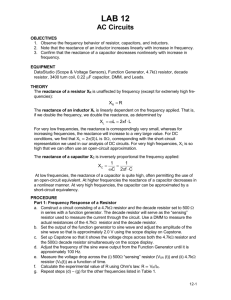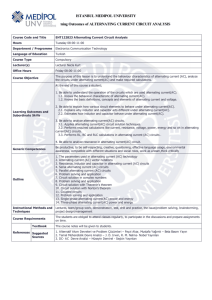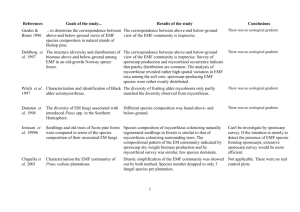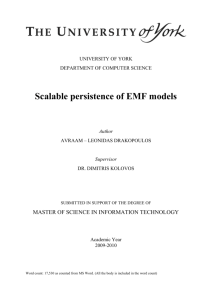ac circuits
advertisement
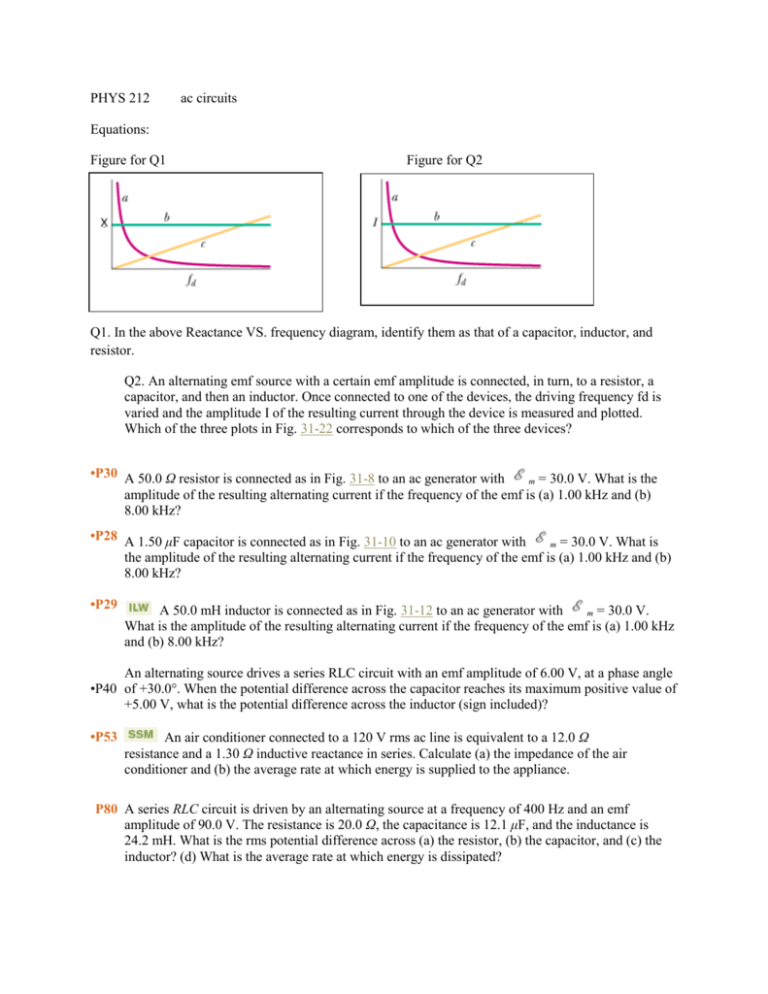
PHYS 212 ac circuits Equations: Figure for Q1 Figure for Q2 Q1. In the above Reactance VS. frequency diagram, identify them as that of a capacitor, inductor, and resistor. Q2. An alternating emf source with a certain emf amplitude is connected, in turn, to a resistor, a capacitor, and then an inductor. Once connected to one of the devices, the driving frequency fd is varied and the amplitude I of the resulting current through the device is measured and plotted. Which of the three plots in Fig. 31-22 corresponds to which of the three devices? •P30 A 50.0 Ω resistor is connected as in Fig. 31-8 to an ac generator with m = 30.0 V. What is the amplitude of the resulting alternating current if the frequency of the emf is (a) 1.00 kHz and (b) 8.00 kHz? •P28 A 1.50 μF capacitor is connected as in Fig. 31-10 to an ac generator with m = 30.0 V. What is the amplitude of the resulting alternating current if the frequency of the emf is (a) 1.00 kHz and (b) 8.00 kHz? •P29 A 50.0 mH inductor is connected as in Fig. 31-12 to an ac generator with m = 30.0 V. What is the amplitude of the resulting alternating current if the frequency of the emf is (a) 1.00 kHz and (b) 8.00 kHz? An alternating source drives a series RLC circuit with an emf amplitude of 6.00 V, at a phase angle •P40 of +30.0°. When the potential difference across the capacitor reaches its maximum positive value of +5.00 V, what is the potential difference across the inductor (sign included)? •P53 An air conditioner connected to a 120 V rms ac line is equivalent to a 12.0 Ω resistance and a 1.30 Ω inductive reactance in series. Calculate (a) the impedance of the air conditioner and (b) the average rate at which energy is supplied to the appliance. P80 A series RLC circuit is driven by an alternating source at a frequency of 400 Hz and an emf amplitude of 90.0 V. The resistance is 20.0 Ω, the capacitance is 12.1 μF, and the inductance is 24.2 mH. What is the rms potential difference across (a) the resistor, (b) the capacitor, and (c) the inductor? (d) What is the average rate at which energy is dissipated?


